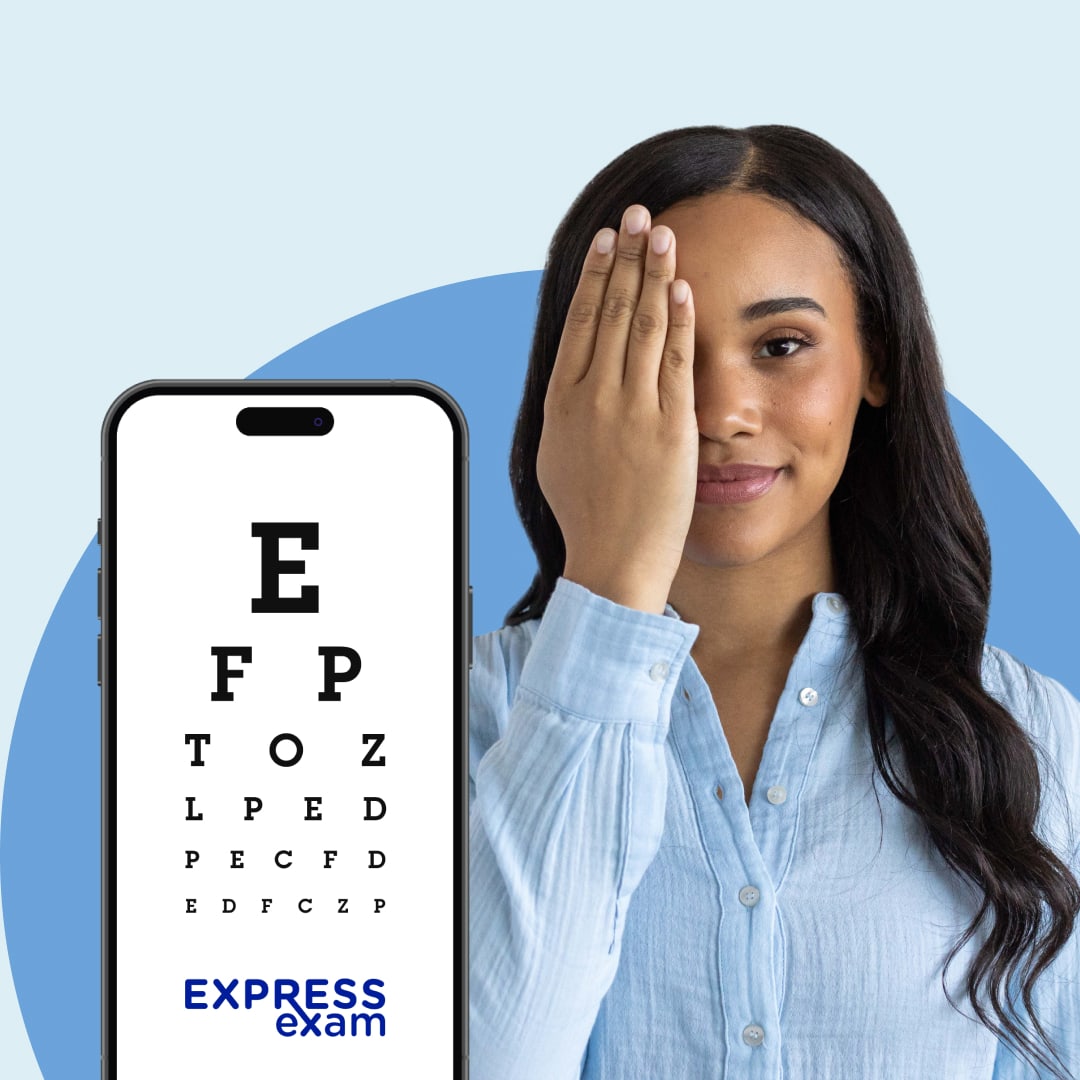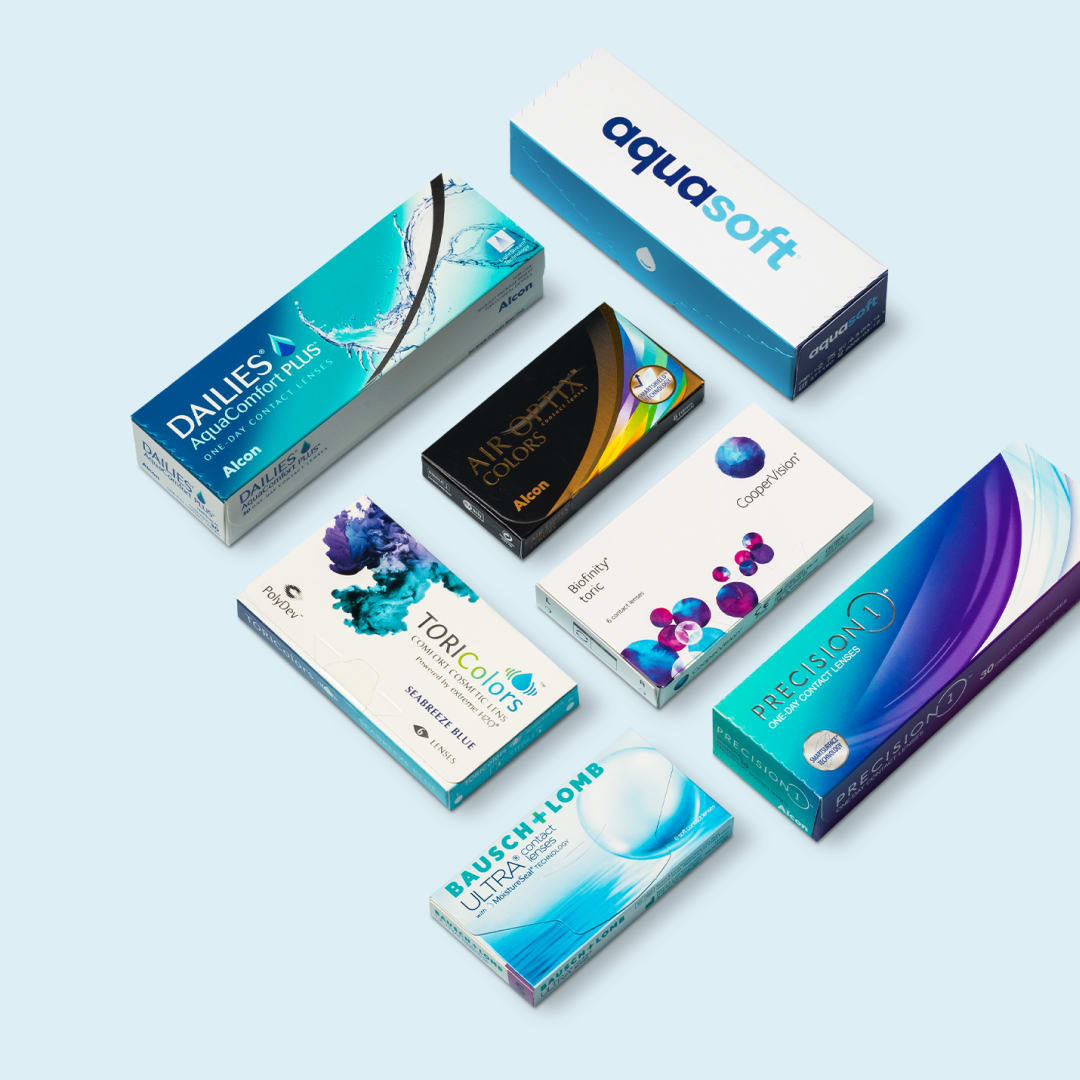When do vision insurance benefits expire?
Imagine this all-too-common scenario. The end of the year approaches, and you've still got money hanging out in your FSA. Before you buy enough OTC meds to dull pain for a small army or bulk bandages for 20 years' worth of scrapes, consider whether you could use your benefits to cover contacts or glasses.
Understanding when vision benefits expire is essential to making the most of these opportunities. However, there's no one answer to when vision benefits might expire — it all depends on the benefits in question.
Some rules are classic and easy to keep up with — the benefits might be use-it-or-lose-it with an expiration date of December 31 of each year. Others are more complex, with potentially revolving dates, and still others stick around as long as you're enrolled in the plan (and paid up on premiums).
Keep reading to find out how vision benefits expire and how you can make the most of them before they do.

Online Vision Exam at 1-800 Contacts
Renew your prescription online with ExpressExam
Try ExpressExam
Vision insurance benefits expiration by plan type
Here's a quick breakdown of how vision insurance benefits generally expire by plan type.
Vision insurance (such as Vision Service Plan or EyeMed)
Your benefits with these plans typically don't expire, but some elements reset, typically on January 1 of each year. Some reset on your benefit anniversary date. What "expiration" means varies depending on the plan.
-
If you buy a discount vision benefit plan and only pay for one year, the discount benefit "expires" after that year is up. It's like a coupon that you didn't use before the expiration date.
-
Vision insurance that comes with a deductible might reset each calendar year. That means you'll have to cover the deductible again before your insurance picks up the cost of contacts or glasses. (You might want to get that extra eye exam at the end of the year before your deductible resets!)
-
Some vision benefits only work so many times in a year. For instance, you might be allowed one pair of glasses each year under your benefits. If that's the case, rushing an exam at the end of the year isn't as cost-effective as waiting for the next year.
Flexible spending account (FSA)
An FSA lets you contribute pre-tax dollars to a savings account that can be used to cover eligible medical expenses throughout the year — including vision care. The Internal Revenue Service only allows you to contribute a certain amount to FSAs each year — in 2025, the limit is $3,300 (plenty for most people's eye exam and contact lens needs). Married couples can contribute $6,600.
FSA dollars must be used before they expire at the end of the year. Some employers might opt to allow FSA funds to carry over to the new year for a few months as a grace period, but you can't carry everything over. It's like a teacher giving you an extra week on an assignment but docking 10% of the grade for being late. In 2025, the IRS allows up to $660 of carryover, for example (still enough for a vision exam and some contacts, in many cases).
Health savings account (HSA)
If you're enrolled in a high-deductible health care plan, you may be able to open a health savings account. The original intent of HSA plans were to help people set aside savings to cover deductible costs. However, you can use HSA benefits to pay for eligible items that aren't covered under your health care plan, including eye exams, contacts or glasses.
HSA funds don't expire at the end of the year. You can roll them over and even invest them to grow the funds over time. HSA contributions are limited by the IRS in any given year. For 2025, the limit is $4,300 for an individual and $8,550 for a family that has a high-deductible insurance plan.
How to use vision insurance benefits
Using your vision benefits is often less complex than figuring out when they expire. Follow the steps below:
-
Check what's covered. Check your benefits if you have vision insurance or determine what items you can use FSA or HSA funds for. You can find this information in your health insurance portal, by asking your employer, or by calling your insurance, FSA, or HSA customer service number.
-
Know your expiration or reset dates. Keep timing in mind when setting appointments or ordering anything you want to use your benefits funds for. In some cases, you may need to pay for the items and submit receipts to your FSA for reimbursement. If the receipt isn't dated before the expiration of your funds, you might be out that money.
-
Schedule an eye exam if needed. Many vision plans cover an annual eye exam, so take advantage of that benefit to help support ongoing eye health. Check with your eye care provider to see if they take your vision insurance if you're using that type of benefit.
-
Shop for glasses or contacts. Once you have a current prescription, you may be able to save money by shopping for them online. You can even use your vision insurance benefits to help cover the costs of contacts at 1-800 Contacts.
-
Submit receipts if required. Many FSA and HSA plans come with debit cards you can use for eligible expenses. However, if you pay for glasses or contacts via another method, you can submit receipts for reimbursement.

Order Contact Lenses Online
Learn how to order contact lenses online at 1-800 Contacts
Order contacts
How to check your remaining vision insurance benefits
Not sure how much of your benefits you’ve used — or what’s still available? Here’s how to check your remaining vision insurance benefits before they expire:
-
Log into your insurance provider’s website, if applicable. Many vision insurance companies let you manage or view benefits through a member portal. You may be able to see how much of a benefit you've used, what you have left, what your insurance has paid for, and when various benefits expire. Look for an option like "Benefits," "Coverage Summary," or "Claims."
-
Call the customer service line for your benefits. If you don't have a portal or aren't sure how to access benefits information through it, call your benefits provider for information.
-
Check your FSA or HSA balance. You can typically use your balance to cover any eligible expenses, so whatever your fund amount is, that's your "remaining" benefits.
-
Ask your eye care provider. They may be able to do a benefits verification if you have vision insurance to see what services are covered. This also helps them verify that they're in-network with your plan.
How to maximize your vision insurance benefits before they expire
Vision insurance and other relevant benefits aren't free. When you're working hard to ensure access to employer-sponsored benefits or cover premium payments — or you're socking away savings for future health expenses — maximizing those benefits makes sense. Let's dig into some tips for getting the most bang for your benefits buck.
Stay on top of timelines
Wearing contacts past the recommended date (we know someone is out there stretching their daily disposables over a long weekend) is not good for overall eye health. And trying to stretch your benefits past their expiration date is not good for your wallet. Plan proactively to ensure you use all your benefits every calendar year.
Make your appointment early
You're not the only one with benefits that expire, and with December 31 a common last day to use them, there can be a rush for eye exams toward the end of the year. You also might contend with parents making appointments for kids and college students during winter breaks. When possible, make your eye exam appointment earlier in the year so you're not left hanging when the only available slot is in the new year.
Renew your prescription online
If you've previously had a prescription, you might be able to renew it online with ExpressExam. This option keeps you out of the eye care office completely and can help you rush through an order for contacts before vision benefits expire. While it's different from a comprehensive eye exam, it's a safe, convenient option for many people.
Use your FSA or HSA debit card
Purchase contacts or other eye care supplies with your FSA or HSA debit card whenever possible. Using the card means money flows from your health savings account directly to the vision care business — you're not acting as the middle man for the transaction.
File reimbursement claims immediately
If you do have to act as the middle man, make sure to keep all your receipts and file for reimbursement immediately. It can be easy to file the paperwork away in a drawer or lay it on a counter, thinking you'll get to it later. However, making a rule to file for reimbursement before you pop a fresh pair of contacts into your eyes can reduce risks that you'll forget or lose necessary receipts.
Buy a backup with your benefits
Don't think you'll run out of contacts before your benefits expire? Consider buying some anyway if your prescription is stable. You could also use the benefits to purchase a pair of backup glasses or splurge on prescription sunglasses.
Stack Your Savings Smartly
In some cases, you can use vision insurance to cover exams and FSA or HSA funds to pay any copay. In short, when you've got more than one benefit, you're more than covered — as long as you remember to use them all.

The Framery at 1-800 Contacts
Get premium frames starting at $79
Shop glasses
Why use your benefits before they expire?
The reasons to mark your calendar and stay ahead of your vision benefits stack up to personal savings and convenience. They include:
-
Not losing money. Your use-it-or-lose-it dollars really are gone when they're gone (not gone like Gandalf falling into darkness — nothing's arriving on a white horse at dawn).
-
Getting the most out of your coverage. Your benefits are designed to be used annually — eye exams, glasses and contacts all help maintain long-term eye health, so put those perks to work!
-
Avoiding end-of-year rushes or stressful timelines by using your benefits as early as possible.
Ready to use your benefits now? Find out how easy it is to order contacts online.
Did you know you can order contacts online?
Say goodbye to trips to the eye doctor and hello to convenience! With 1-800 Contacts, you can easily order your contact lenses online and have them delivered straight to your door. Plus, our online vision exam makes it simple to get the prescription you need without leaving home. And the best part? You’ll save money on your first order with 1-800 Contacts. It’s never been easier to get your contacts!





